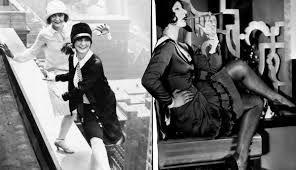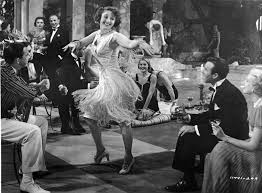The 1920s in America was a time of cultural rebellion, progress, and transformation. This was the era of the flapper, a bold and daring symbol of women’s liberation that redefined societal norms and set the stage for modern feminism. But what exactly sparked the rise of flapper culture? Let’s dive into this fascinating chapter of history and explore how it changed America forever.

What Is a Flapper?
Before diving deeper, let’s clarify: who were the flappers? These young women of the 1920s rejected traditional roles and embraced a new lifestyle characterized by short bobbed hair, knee-length dresses, jazz music, and a carefree attitude. Flappers were bold, unapologetic, and determined to break free from societal constraints.
The Roots of Flapper Culture
The Impact of World War I
The end of World War I brought significant societal shifts. Many women had entered the workforce while men were fighting overseas, proving their capability and independence. When the war ended, they were reluctant to return to their pre-war domestic roles.
The 19th Amendment: A Victory for Women’s Rights
The ratification of the 19th Amendment in 1920, granting women the right to vote, was a monumental milestone in women’s liberation. This political empowerment fueled a sense of autonomy and self-expression that found its way into every aspect of women’s lives.
The Flapper Look: Fashion as a Statement
Breaking Free from Victorian Constraints
Gone were the corsets and heavy fabrics of the Victorian era. Flappers embraced loose, drop-waist dresses that allowed freedom of movement. Their outfits symbolized liberation and rejection of traditional femininity.
Accessories and Makeup: Defining the Style
Flappers wore bold makeup, including dark eyeliner, red lipstick, and rouged cheeks a stark contrast to the understated look of previous generations. Accessories like cloche hats, long pearl necklaces, and feathered headbands completed the iconic flapper aesthetic.
Dancing into Freedom

The Jazz Age Influence
Flappers were inseparable from the Jazz Age, a cultural movement that revolutionized music and dance. Speakeasies became popular spots where flappers showcased their moves to the upbeat rhythms of jazz.
Scandalous Moves: The Charleston and Beyond
Flappers popularized dances like the Charleston, the Shimmy, and the Black Bottom, which were considered daring and provocative. These dances reflected their desire to challenge norms and embrace a carefree lifestyle.
Breaking Societal Norms
Redefining Relationships and Sexuality
Flappers challenged traditional views on relationships. They embraced casual dating, rejected the concept of chaperones, and advocated for personal choice in marriage and relationships. This was a revolutionary shift in a society that had long upheld conservative ideals.
The “Flask and Cigarette” Rebellion
Flappers were infamous for their public consumption of alcohol and cigarettes, acts that were seen as scandalous at the time. During Prohibition, carrying a flask became a bold statement of rebellion against restrictive laws.
The Role of Media in Popularizing Flapper Culture
Hollywood and the Silver Screen
Silent film stars like Clara Bow and Louise Brooks became icons of flapper culture, inspiring countless young women to adopt the style and attitude.
Magazines and Advertisements
Magazines like Vogue and The Saturday Evening Post featured flapper fashion and lifestyles, making the trend accessible to a wider audience. Advertisements also began targeting women as independent consumers.
Criticism and Controversy
Backlash from Traditionalists
Not everyone celebrated the rise of the flapper. Traditionalists saw them as immoral and a threat to societal values. Churches and conservative groups often denounced flappers as symbols of moral decay.
The Generational Divide
The flapper movement widened the gap between younger and older generations. While young women celebrated newfound freedom, their parents struggled to accept the rapid cultural shifts.
The Economic Boom and Consumer Culture
Increased Disposable Income
The post-war economic boom meant more women had disposable income, enabling them to indulge in fashion, entertainment, and leisure activities associated with flapper culture.
Department Stores and Mass Production
The rise of department stores and mass production made flapper-style clothing and accessories affordable, further popularizing the trend.
The Role of Education and Employment
Higher Education Opportunities
The 1920s saw an increase in women attending college, exposing them to progressive ideas and broader career opportunities.
New Career Paths
Flappers often pursued careers as secretaries, saleswomen, and journalists, breaking into spaces traditionally dominated by men.
The Decline of Flapper Culture
The Great Depression
The stock market crash of 1929 marked the end of the Roaring Twenties and the flapper era. Economic hardship shifted priorities, and the carefree lifestyle became less practical.
Legacy of the Flapper Movement
Although the flapper era was short-lived, its impact on women’s rights and societal norms was profound, paving the way for future feminist movements.
The Modern-Day Echoes of Flapper Culture
Fashion Trends Inspired by Flappers
Elements of flapper fashion, such as bobbed hair and fringe dresses, continue to influence modern style. Period dramas like The Great Gatsby have reignited interest in the era.
Empowering Attitudes
The flapper’s spirit of independence and rebellion can be seen in today’s movements for gender equality and self-expression.
Conclusion
The rise of flapper culture in 1920s America was more than a fleeting fashion trend; it was a powerful statement of women’s liberation and societal transformation. Flappers challenged conventions, embraced modernity, and left an indelible mark on history. As we reflect on their legacy, we’re reminded of the importance of breaking barriers and redefining norms in the pursuit of freedom and equality.
Unveiling the Mystique of African Masks: A Glimpse into Tribal Rituals and Beliefs
FAQs
1. What sparked the rise of flapper culture?
The end of World War I, the 19th Amendment, and economic prosperity were key factors that inspired the flapper movement.
2. What were some iconic elements of flapper fashion?
Flapper fashion included drop-waist dresses, bobbed hair, bold makeup, and accessories like cloche hats and long necklaces.
3. How did flappers challenge societal norms?
Flappers redefined femininity by embracing casual dating, public consumption of alcohol, and provocative dancing, rejecting traditional gender roles.
4. Why did flapper culture decline?
The Great Depression of the 1930s shifted societal priorities, leading to the decline of the carefree lifestyle associated with flappers.
5. What is the legacy of the flapper movement?
The flapper era paved the way for modern feminism, inspiring future generations to challenge societal norms and fight for gender equality.


